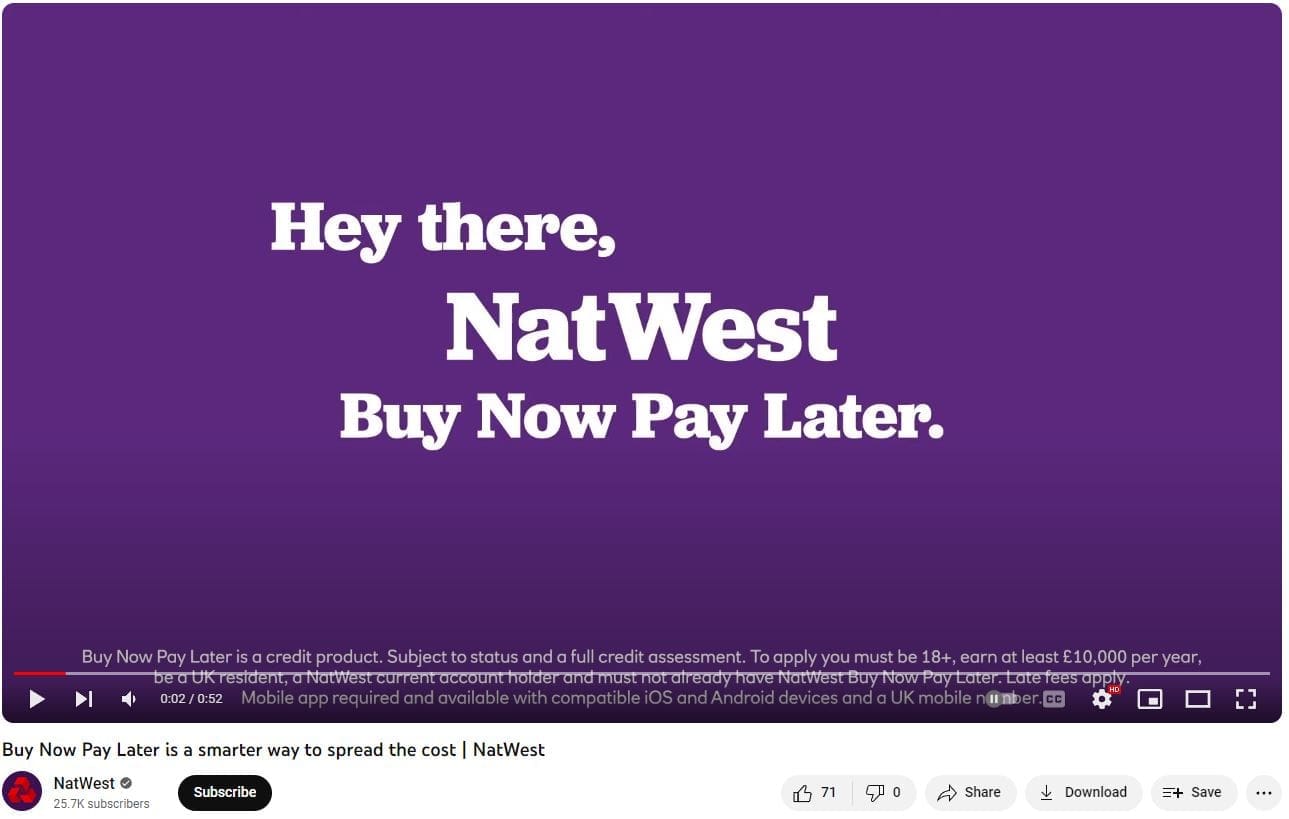For most younger consumers, the rising cost of living represents the first experience of a challenging economic environment. Already, a quarter of 18-24 year olds say they are uncomfortable with their debt levels, while more than four in ten of this age group expect their debt levels to increase over the next year. With less financial experience than older demographics, young people will need support from financial providers. In this blog, we explore 3 ways brands can help young consumers manage their finances during the cost of living crisis.
1. Help young consumers understand credit products
The market for credit products is growing as people look to navigate the cost of living crisis. Young consumers’ finances are no exception, with 64% of 18-24 year olds having unsecured debts such as credit cards, overdrafts and loans. With less financial experience, it is important for banks to provide clear guidance for young customers. Already more than three in ten of under 25s say they have been rejected for credit products in the last year, potentially impacting credit ratings.
It is vital banks show consumers their odds of being approved for credit products to aid decision making without any detrimental impact on credit scores. There is strong demand for such services, with 45% of under 25s saying they would happily share their financial data to see their chances of approval. There is also scope for credit score checking functionality to be expanded. We have seen NatWest partner with TransUnion to offer customers free credit score checks in-app, with guidance on how potential credit applications would impact the score and tips to improve it.
Banks should also look to boost financial education amongst young Brits. This could include live streams and video content available in-app or via social media, providing guidance on understanding and improving credit ratings, alongside budgeting advice and clear links to debt advice services. Currently the use of debt advice tools and services is extremely fragmented, and seeking help could prove overwhelming for young consumers without guidance from banks. If the cost of living crisis persists, this guidance will be vital, with 43% of under 25s with debts saying they have missed a repayment in the last 12 months.
2. Offer innovative, app-based budgeting and financial services products
Mobile banking platforms have increasingly offered budgeting tools and this has grown in importance through the cost of living crisis. There remains room for improvement and this will be key in engaging young consumers. Mintel’s latest research finds that more than half of under 25s with multiple accounts say they use additional accounts as the mobile app is superior to that of their main account provider. If retail banks cannot innovate, they risk younger customers shifting their main bank accounts to digital banks such as Monzo or Chase. Alongside innovative budgeting tools, raising awareness of Open Banking technology will be important. Nearly seven in ten financial app users under 25 would prefer to see all their financial products in a single app. This makes the main bank account the ideal hub for helping tech-savvy young customers gain a detailed picture of their finances.

The widespread use of apps by younger consumers also provides an opportunity for financial services to boost engagement with demographics they have struggled to attract in the past. In particular, areas such as insurance and investments could significantly boost their appeal by focusing more on app-based accounts. This could be through mobile banking apps and partnerships with digital banks, links to third-party aggregators or standalone brand apps. The key is simplifying the process of opening accounts, accessing product information and comparing prices.
This could also drive innovation in industries that have traditionally been slow to change. We have seen the launch of US insurance FinTech Lemonade in partnership with Aviva and there is room to disrupt the market further. Just 6% of finance app users under 35 have used an insurance app in the last year, with similar low levels of usage for investment apps, which highlights the need to boost engagement.
3. Tailor credit products and accounts to younger lifestyles
Nearly a fifth of people under 25 say they owe money on a current account overdraft facility, compared with just 8% of the over 55s. This reflects weakerf savings and financial resilience amongst younger consumers. Many will be looking for additional forms of credit as the cost of living crisis progresses and they run out of cutbacks. Despite high interest rates, overdrafts represent a convenient, widely available form of credit for young people. Offering attractive interest free buffers could prove a major draw when it comes to choosing new accounts for switching.
In recent years, cash joining incentives have driven switching activity. However, deals such as HSBC’s limited time £500 interest free overdraft for 12 months could prove enticing.
There is a need for bank accounts and credit products to be tailored towards younger lifestyles. Including low or interest free overdrafts for younger people during the difficult economic environment could help boost loyalty and create lifelong customers. Some banks, such as NatWest and Monzo, have also integrated buy now, pay later (BNPL) services into their accounts. There is also scope to offer account add-ons such as smartphone insurance and contents insurance for rented and shared accommodation. Meanwhile, credit cards should prioritise building credit history and rewards that include discounted tickets to events such as festivals. If net cost savings can be demonstrated, this could help boost ownership of fee-paying accounts among younger people.

What we think
It is also important that banks do not forget the importance of face-to-face support for young customers. Branches have consistently closed in recent years as footfall declines and people shift towards digital communications. Despite this, nearly two thirds of under 25s say they prefer financial providers that have a physical branch and 58% of this age group say the rising cost of living has encouraged them to talk to financial providers face-to-face.
Branches can offer reassurance and amongst those with less financial experience, face-to-face guidance must remain an option. As young people face increasing financial pressure, banks should increase availability and awareness of video chat appointments and be proactive in ensuring young customers are receiving the support they need during the cost of living crisis.









































